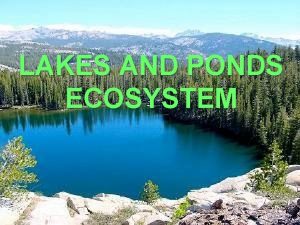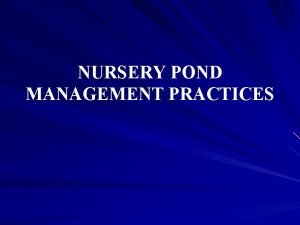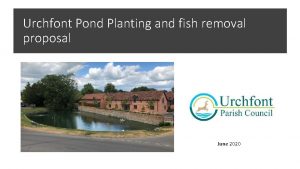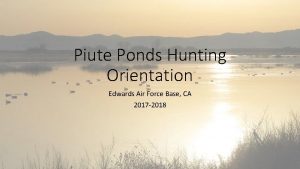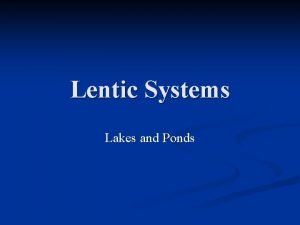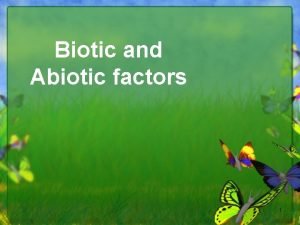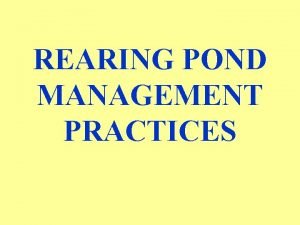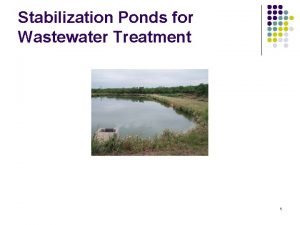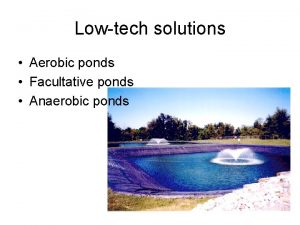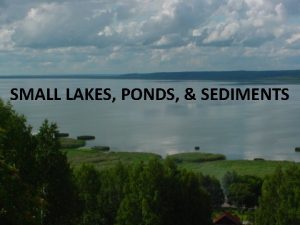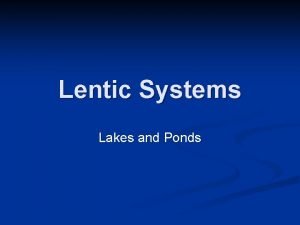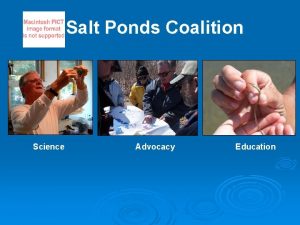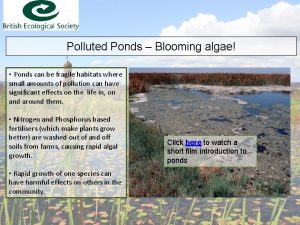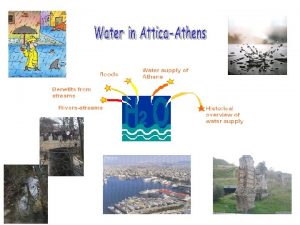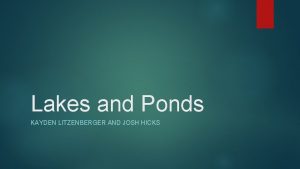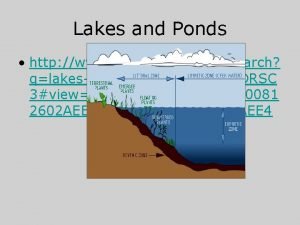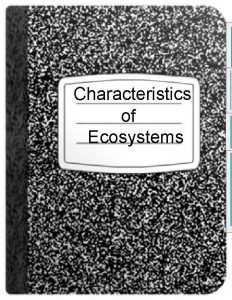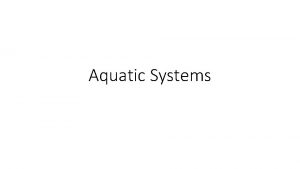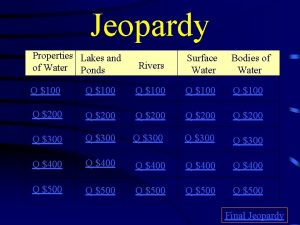Ponds and Lakes Questions What makes riversstreams different














- Slides: 14

Ponds and Lakes

Questions • What makes rivers/streams different from lakes and ponds? • What is the difference between ponds and lakes? • How do ponds and lakes form? • What is the bottom of a pond a lake like?

Rivers/streams vs. ponds/lakes • Water in streams/rivers is always moving • Water in lakes/ponds is still or standing • There is no exact rule, but ponds are generally smaller than lakes. Light usually reaches the bottom of ponds

Formation of ponds/lakes • Water collects in hollows or low areas • Water comes from rainfall, melting snow/ice, runoff, other rivers, ground water • Eventually water can flow out of ponds/lakes or it can evaporate— drying up the water

Ponds • Bottom covered in weeds, muddy, plants grow at the bottom because they get sunlight • Not all ponds exist year-round— appear in spring and dry up over summer, may freeze in winter • Provide habitat for lots of organisms

Lakes • Bottom: sand, pebbles, rock, generally no plants because the sun doesn’t reach it • Formation: oxbow lakes, ice sheets melting creating depressions, movements in Earth’s crust, volcanoes, people • Habitat for organisms—fewer at the bottom because of the lack of plants there

Changes in Lakes • Mixing of lakes: – summer—warm water floats on top of cooler denser water – fall—top water cools, sinks to bottom and mixes nutrients

• Lakes filling in: – organisms release waste in water and eventually die which builds up on bottom. Eventually the lake fills in as plants grown along edges and the debris on the bottom piles up

Wetland Questions • What is a wetland? • What are some types of wetlands? • Why do we need wetlands?

Wetlands

Wetlands • A wetland is and area of land covered with shallow layer of water during part or all of the year • They range in size from water-filled roadside ditches to 1000’s of sq kilometers

Freshwater Wetlands • Marshes: grassy areas that contains cattails and tall grass-like plants • Swamps: look like flooded forests with trees and shrubs in the water—usually in the south • Bogs: more common in cooler northern states, acidic with lots of moss

Coastal Wetlands • Salt Marshes: tall strong grass, muddy bottom, all along US coasts • Mangrove Forest: central and south coast of Florida, short trees, thick tangles roots—help fight tropical winds and storms

Importance of Wetlands • 1970—Government created laws to protect wetlands • Wetlands provide habitat for animals • Provide natural filtration – water moves slowly through a wetland, waste settles out • Control flooding by absorbing extra runoff during heavy rains – like a big sponge—when drained or paved over cannot absorb water
 Lakes and ponds ecosystem
Lakes and ponds ecosystem Pre and post stocking management of pond
Pre and post stocking management of pond What is haymitch's training strategy for katniss and peeta?
What is haymitch's training strategy for katniss and peeta? Coir rolls for ponds
Coir rolls for ponds Piute ponds
Piute ponds Lentic zone
Lentic zone Abiotic factors in pond
Abiotic factors in pond Ikoros
Ikoros Aerobic ponds
Aerobic ponds Management of rearing ponds
Management of rearing ponds Oxidation ponds
Oxidation ponds Iklan ponds
Iklan ponds What makes one biome different from another?
What makes one biome different from another? What makes them different?
What makes them different? What makes them different?
What makes them different?
